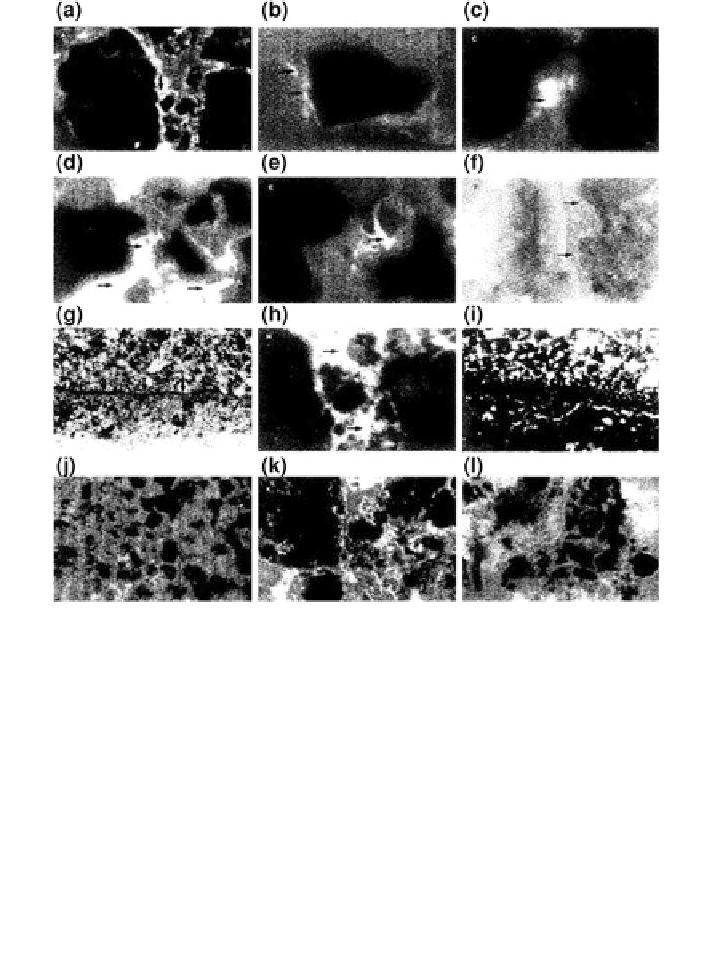Geoscience Reference
In-Depth Information
Fig. 18.44 Microstructure of clogged soil under anaerobic conditions. a Andosol after
submergence for 4 months. Soil pores were filled with fine particles, suspended solid materials,
bacteria cells, and bacterial synthesized products (frame length 750 lm). b Arenosol after
submergence for 4 months. A bridge structure. Organic materials (arrows) clogged only a narrow
portion between two sand particles (frame length 750 lm). c Andosol after submergence for
2 months. Arrow indicates the initial state of clogging in the portion connecting two grains. d,
e Andosol after submergence for 4 months. Soil pores were fully sealed by polysaccharides.
f Andosol after submergence for 4 months. Bacterial cells (arrows) in soil pores. g Fluvisol after
submergence for 4 months. Compact grain structure. Dark girdle (arrows) consists of the layer
accumulated materials. h Andosol after submergence for 4 months. Soil pores were sealed by
suspended solid material, fine particles, and polysaccharides. i Andosol after submergence for
4 months. Structure of layer of accumulated materials. j Andosol after submergence for
4 months. Structure of layer of accumulated materials soil pores was completely filled with
organic materials. Aggregates were destroyed to form fine particles. k Andosol after submergence
for 4 months. An aggregate (left) and a destroyed aggregate (right). l As in (k), destroyed
aggregate (Jiang and Matsumoto
1995
). Reprinted with permission
found substantial differences in the chemical composition and structure between
the HA of natural soil and that extracted from soils (CS-HA) after sewage sludge
compost disposal. Compared to natural soil (SO-HA) humic acid, the soils con-
taminated by disposal of sewage sludge compost (CS-HA) display large S and N
contents, which can be attributed to ''the incorporation of protein decomposition

